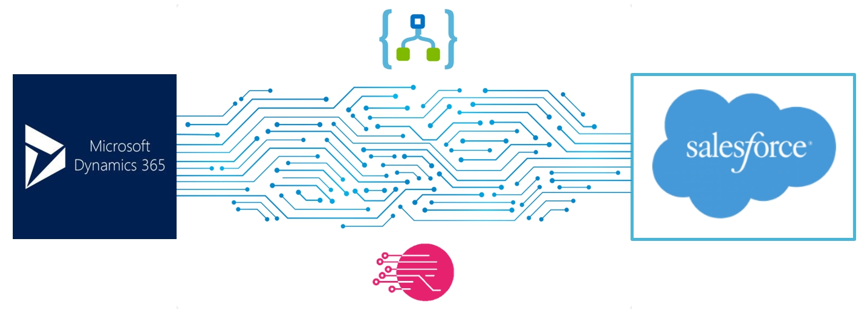How Sales force Integration with Microsoft Dynamics 365 Works for Companies
As ERP and CRM solutions, Microsoft Dynamics 365 and Sales force already work independently to create workflows and databases that serve your company as you give customers and clients a great, core experience. They manage relationships with your customers, they handle finances, and they can even oversee inventories. At every level, these systems do something different to push your organization along its trajectory. Together, they can do even more for your company. Choose Salesforce Microsoft Dynamics 365 integration for its many great benefits for your organization that can turn up the dial on performance and productivity.
When you see how your company can speed ahead and smartly cope with changing consumer or client needs, you won’t wonder why so many firms are turning to third-party integration of their systems. By improving the way their systems actually relate to and work with each other, integration can encourage the streamlining of data as well as the truth-seeking process. In doing so, your company can gain new advantages while observing and understanding their data more comprehensively and holistically. The bridge that Microsoft Dynamics 365 and Sales force can create between them enables you to watch and synchronize data from across your company. The creation of a seamless ecosystem produces advanced efficiency and effectiveness.
An Increasingly Popular Method for Sales force Microsoft Dynamics 365 Integration
When a company like yours chooses to go through the process of integrating their systems, they’re faced with several challenges and often come to the same conclusions. With their normal and internal IT teams, the integration demands stack up and create an extensive amount of work that many small departments find daunting, technical, and difficult to manage. This leads to blunders and, in some cases, irreparable data loss so that the company endures a trial and error period. Going this way, they would feel that integration is too risky and challenging to make a priority, and they would lose the advantages that integration brings.
Alternatively, third-party platforms are offering ways for companies to at last integrate data with much less headache and hassle. Instead of tasking the IT department with the project, companies can use them to get a pre-configured solution and template for integrating data. Instead of the complexity and pitfalls the in-house options present, the third-party integration process gives a way for all kinds of companies to integrate simply and swiftly.
It makes sense why more are choosing this option when they seek to integrate since they wouldn’t want to suffer errors or delays. Rather than deal with the technicalities and bugs of an in-house integration, they complete the work of integrating and get to quick benefits. These are some of the most popular reasons for integrating to explore next:
- Boost the speed of total integration and efficiency between systems.
- Make discovering data and making analyses simple.
- Secure systems and customers in warehouses of data.
Boost the speed of total integration and efficiency between systems.
The template solution to integration can be made custom to your organization, and when you integrate using this tailored tool, you’ll see that systems engage each other nearly instantly in some cases. You can use your systems as usual and to their maximum capacity throughout the process, and you can enjoy your new ability to secure and access your data. Without such integration tools, you would need to coordinate these rigid systems with each other yourself.
Make discovering data and making analyses simple.
The static and isolated format for systems becomes complex and burdensome for teams with many tools doing similar, same, or duplicate tasks. Instead, giving the most reliable data to every corner of your organization is possible through a format that connects these solutions rather than disjoints them. With the reliable, complete data you gain through integration, make the soundest decisions for your company through looks at data that are more robust and helpful.

Secure information and customers in warehouses of data.
Many companies and customers face the threat of attack when concerned with data and integration. That’s why solutions like Rapid offer pre-configured templates so that data can be protected at the highest standard and level of integrity for consumers. Using secure and local warehouses, these solutions can actually beat international data standards for protecting customers and offering security to all.
Join the Microsoft Dynamics 365 Sales force Integration Trend
Seeing these reasons for integration and also knowing how it impacts your company, you might see that you have a chance for a more flexible and coordinated strategy of doing business. Cloud-based innovators like Rapid can help by offering support, solutions, maintenance, and consistent updates and information. See how Rapidi can integrate your company’s systems.